This project is made possible through the partnership of WATER CHARITY and the NATIONAL PEACE CORPS ASSOCIATION. ![]()
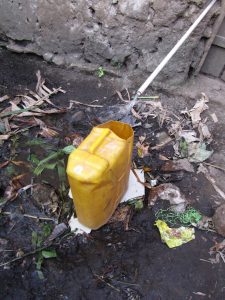 Location
Location
Bubazi Cell, Rubengera Sector, Karongi District, Western Province, Rwanda, Africa
Community Description
The Bubazi Health Center’s catchment area encompasses two cells (Bubazi and Gitwa Cell) and 15 villages and has a population of approximately 8,700 people. This project will benefit Bubazi Cell, which has a population of approximately 3,436 people and 7 villages: Kavumu, Kigarama, Gakomeye, Nyagahinga, Makurungwe, Gitwa, and Kabuga Village.
Bubazi Cell has two schools: one Primary School and one Secondary School, with over 1,100 students attending (about 800 primary students and about 300 secondary students). There is also one nursery school with approximately 20 children in attendance. Students come from a wide range of cells to attend these schools. These are day schools, where some of the children walk well over 1 hour to attend. The school system is not able to provide food to the children and at this time there is no water available to the children.
The Bubazi Cell is located in the Western Province of Rwanda where the weather is mild, the terrain is mountainous and lush. It rains often with the rivers and streams flowing strong, yet very brown. The majority of the people still fetch their water from the rivers and streams.
People are hard workers. They love to cultivate! Every day, without fail you will see women (and in the more remote villages, men and children) cultivating and planting from early morning until early afternoon. There is an abundance of vegetables, fruits, and grains grown in the area (eggplant, cabbage, tomatoes, green beans, onions, garlic, avocado, bananas, pineapple, papaya, mango, corn, rice, soy, and beans). This is due to the abundant rain and people who love to cultivate.
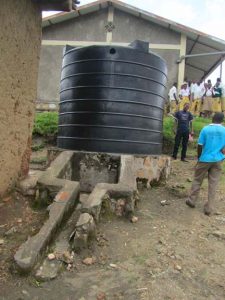 In the early 1970s, a Swiss NGO established an Agricultural Project in the area of Bubazi Cell. They helped establish plantain farms and formal agriculture. To this day the people of this community are extremely knowledgeable about farming. Between 1972 -1976 the Swiss constructed the buildings of the compound that is now the Bubazi Community Health Center.
In the early 1970s, a Swiss NGO established an Agricultural Project in the area of Bubazi Cell. They helped establish plantain farms and formal agriculture. To this day the people of this community are extremely knowledgeable about farming. Between 1972 -1976 the Swiss constructed the buildings of the compound that is now the Bubazi Community Health Center.
In 1990 the Swiss-built two extensive and efficient water distribution systems. Locally they are known as Gakoma Source and Gatunguguru Source. Both of these water sources are prolific in their water supply. However, Gatunguguru Source appears to be especially vast.
The Gakoma Water Source distribution system originates from an underground source of water located at Gakoma Springs in a remote area of Gitega Cell. This distribution system has been repaired, thanks to Water Charity, through the implementation of Bubazi Water Project 1: Gakoma Source and now provides clean water, suitable for drinking, to 3,116 people in six villages.
The Gatunguguru Water Distribution System originates from an underground source of water located at Gatunguguru Springs in Muvungu Village, Gitega Cell. This distribution system, when in good working order will provide clear water, suitable for drinking to a minimum of 3,436 people in 7 villages as well as providing an abundance of quality water to Bubazi Primary School and Bubazi Secondary School.
Problem Addressed
Through interviews with the Bubazi Health Center staff, with Community Health Workers and with the village people, as well as through observation it is very clear that quality water access, poor hygiene, and waterborne illness is a high ranking problem in the area. The underlying problem which contributes to poor hygiene and illness is access to clean water.
There is an abundance of water in the Bubazi area. The problem is that it is brown and full of parasites. Yet the people drink this unclean water.
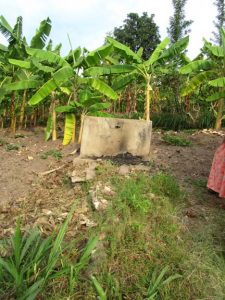 There is a high need for hygiene education in Bubazi and Gitwa Cells in order to align the minds of the people with the concept of hygiene. The W.A.S.H. (Water, Sanitation, Hygiene) Program would be valuable for this purpose. However, many of the people in the Bubazi area must walk long distances to fetch water for their families and then afterward they should boil it. When one village woman was asked why she did not boil the water she fetched from the river before drinking it she replied with a weary expression of resignation on her face, “Who has the time?” Also, the charcoal required for boiling water is very expensive. The problem is the lack of access to quality water. It is not possible to have good hygiene and health if there is no access to clean water.
There is a high need for hygiene education in Bubazi and Gitwa Cells in order to align the minds of the people with the concept of hygiene. The W.A.S.H. (Water, Sanitation, Hygiene) Program would be valuable for this purpose. However, many of the people in the Bubazi area must walk long distances to fetch water for their families and then afterward they should boil it. When one village woman was asked why she did not boil the water she fetched from the river before drinking it she replied with a weary expression of resignation on her face, “Who has the time?” Also, the charcoal required for boiling water is very expensive. The problem is the lack of access to quality water. It is not possible to have good hygiene and health if there is no access to clean water.
At one time the people of the Bubazi area had access to an abundance of quality water within their villages and at their schools. However, due to circumstances, access to this water has been lost. Both the Gakoma and the Gatunguguru water distribution systems were built in 1990. Sometime in the early 1990s, the Swiss NGO left Rwanda. Since the construction of these systems, 25 years ago, there has been very little maintenance of these systems.
This system consists of large, main water lines coming directly from the sources, with feeder lines branching out from the mainline. These feeder lines feed into tap systems where villagers can easily fetch clean water. Many of the feeder lines are broken and most of the taps systems have deteriorated and are unusable. At one time these distribution systems provided water to 31 villages, possibly more. Most of these 31 villages no longer have access to these abundant water sources due to the deterioration of the distribution system. With the implementation of Bubazi Water Project 1: Gakoma Source quality water has been made available to 3,116 village people and to the Bubazi Health Center through the repair of the Gakoma distribution system. However, the Gatugunguru Water source and the 26 water fetching stations (fountains) that provide water to the 7 villages of Bubazi as well as to two Bubazi schools are still in severe disrepair. This leaves over 3,000 village people as well as the 1,130 children who attend the Bubazi schools without access to quality water.
Project Description
The goal of Bubazi Water Project 2: Gatugunguru Source is to repair the Gatugunguru water catchment system, the entire main distribution line and all secondary lines from Gatugunguru Source to Bubazi Cell, its 7 villages, and 2 schools.
Through the implementation of this project the following repairs will be made:
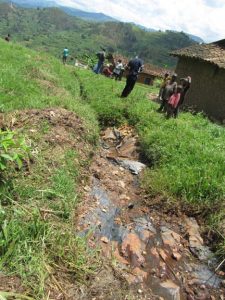 1. The Gatunguguru Source catchment system will be repaired and protected.
1. The Gatunguguru Source catchment system will be repaired and protected.
2. The mainline and all secondary lines will be repaired.
3. All the water catchment tanks and feeder lines to storage tanks that are supplied by the Gatugunguru Source will be repaired.
4. All water fountains directly on the entire mainline will be repaired and made operable.
5. The 26 water fountains (water fetching stations) located in the 7 villages of Bubazi Cell, and all distribution lines supplying these fountains will be repaired, made in good working order, and made available for the all people of the community for water access.
6. All feeder lines to the Bubazi Primary and Bubazi Secondary Schools will be repaired and four holding tanks on school grounds will be repaired and made in good working order. All fountains (water fetching stations) on school grounds will be repaired.
7. To set up a program for monitoring and maintenance of the Gatunguguru Source distribution systems.
The holistic goal and desired outcome are to provide the people of the Bubazi community the means to create healthy, vital lives for themselves. This will support the objective of the First Thousand Days project of improving the health and life expectancy of pregnant mothers and children as well as significantly lightening their workload.
In the Bubazi Community, quality water access is the foundation of good health, followed by education and behavior change. It is difficult to ask people to change behavior when they do not have the resources to do so. This is a set up for failure. By making quality water accessible to the community we are setting the community up for success in the areas of good hygiene and good health.
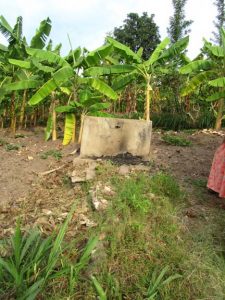 Project Impact
Project Impact
This project will provide quality water to 3,436 village people and 1,130 school children (many of these children travel from villages outside of Bubazi Cell).
Peace Corps Volunteer Directing Project
April Zachary
Monitoring and Maintenance
The Bubazi Health Center will be taking responsibility for the maintenance of the Gatunguguru Source and the Gakoma Source water distribution systems.
The Bubazi Health Center’s maintenance plan for the Gatungurguru Source and the Gakoma Source distribution system is as follows:
1. Each March, when the Health Center’s budget is planned, the health center will request funds for the year’s maintenance/repair of the water distribution system.
2. The health center will create a contract with a local plumber who will work for them on an on-call-basis for any repairs or maintenance needed for the system
3. The Executive Secretary of Bubazi Cell and the Bubazi Health Center Titulier will require each Village to create a Village Water Security Committee (VWSC). The committee will have a minimum of 3 people (more if possible) who will be responsible for the Water Security in their villages. They will provide quarterly Water Security Awareness Training to the peoples of their village. The training will have the purpose of inspiring the community to take ownership of the water distribution system and to participate in keeping it secure and strong. Parents will be asked to talk with their children about the importance of keeping their water system functioning efficiently (this will help prevent the occasional vandalism that happens to the water lines by the children). Parents and children will be asked to report to the Water Security Committee any broken pipes, non-functioning tap systems or anything that could be related to water security.
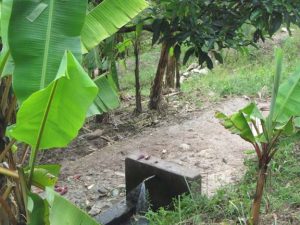 4. The Water Security Committee will do a monthly inspection of all of the water catchment tanks and tap systems in their village areas. They will report any problems (or potential problems) to the health center.
4. The Water Security Committee will do a monthly inspection of all of the water catchment tanks and tap systems in their village areas. They will report any problems (or potential problems) to the health center.
5. Quarterly, the people will clean (de-weed, etc.) the exterior of all water catchment tanks and taps systems, and the grounds around them, in their village area. They will report to the VWSC anything that looks unusual or could become a problem to water security. 6. The plumber will do an annual inspection of all water catchment tanks and taps in the Bubazi Cell. 7. The Health Center Titulier will have an annual meeting with the Village Water Security Committees in order to discuss any potential problems to the water security, any improvements needed to the reporting systems and any changes that need to happen within the committee (member rotations, etc.)
Comments
This is the second stage of a two-part project for repairing the water distribution system in the Bubazi area. The first project, Bubazi Water Project 1: Gakoma Source, was successfully completed on March 10, 2016.
Upon the completion of this second project, Bubazi Water Project 2: Gatugunguru Source, the entire water distribution system supplying quality water to the Bubazi area will be in good working order, with a maintenance/protection plan in place.
Friends and family of Peace Corps Volunteer April Zachary may contribute using the donate button below. Funds in excess of the project amount will go to other projects in Rwanda.
If you would like to help us with similar projects, please donate to the East Africa Water and Sanitation Program.
This project has been completed. To read about the conclusion, CLICK HERE.